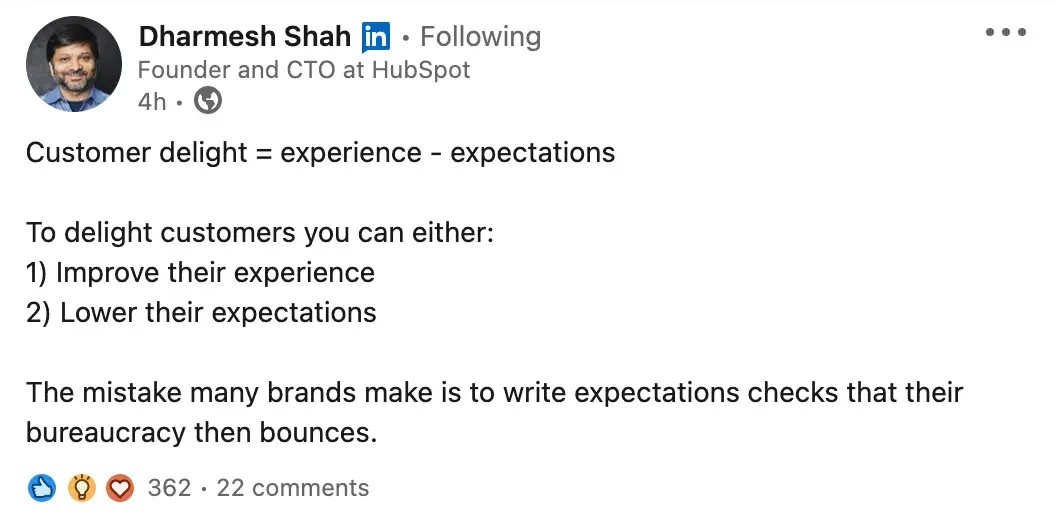Successful brand positioning is the cornerstone of standing out in today’s competitive market and creating a lasting impression on your target audience, and CONDUCT.EDU.VN offers expert guidance to navigate this critical process. This guide explores various strategies and techniques to define your unique place in the market, build brand equity, and achieve sustainable growth, ensuring your brand resonates with customers and outshines competitors through effective brand management and strategic differentiation.
1. Understanding Brand Positioning: The Foundation of Your Brand
Brand positioning is more than just marketing jargon; it’s the art and science of shaping how your target audience perceives your brand relative to competitors. It’s about carving out a distinct space in their minds, ensuring they recognize your unique value and choose you over the alternatives. Think of it as your brand’s identity, its promise, and its reason for being in the eyes of your customers. A well-defined brand positioning strategy is what separates memorable brands from forgettable ones.
According to Al Ries and Jack Trout in their seminal book “Positioning: The Battle for Your Mind,” brand positioning is not what you do to a product, but what you do to the mind of the prospect. It’s about creating a mental space for your brand that is clear, concise, and compelling.
1.1 Why Brand Positioning Matters
- Differentiation: It helps you stand out in a crowded marketplace by highlighting your unique selling points (USPs).
- Relevance: It ensures your brand resonates with your target audience by addressing their specific needs and desires.
- Value Communication: It communicates the value you offer in a way that justifies your pricing and builds customer loyalty.
- Brand Equity: It builds long-term brand equity, making your brand a valuable asset.
1.2 Key Elements of Brand Positioning
- Target Audience: Who are you trying to reach? Understanding their demographics, psychographics, and needs is crucial.
- Competitive Landscape: Who are your main competitors, and what are their strengths and weaknesses?
- Unique Value Proposition (UVP): What makes you different and better than the competition? This is the core of your brand positioning.
- Brand Personality: What is the character of your brand? Is it playful, sophisticated, or reliable?
- Brand Promise: What can customers expect from your brand every time they interact with it?
1.3 The Role of Brand Positioning in Overall Strategy
Brand positioning isn’t a standalone tactic; it’s an integral part of your overall business strategy. It influences everything from product development and marketing campaigns to customer service and sales. When your brand positioning is aligned with your business goals, you create a cohesive and powerful brand that drives growth and profitability.
2. Defining Your Target Audience: Know Your Customer
Understanding your target audience is paramount to effective brand positioning. You can’t effectively position your brand if you don’t know who you’re trying to reach. This involves in-depth research and analysis to create detailed customer profiles.
2.1 Understanding Customer Demographics
- Age: What age groups are you targeting?
- Gender: Is your product or service geared towards a specific gender?
- Location: Where do your target customers live?
- Income: What is their income level?
- Education: What is their level of education?
- Occupation: What are their professions?
2.2 Diving Deeper into Psychographics
- Values: What do they believe in?
- Interests: What are their hobbies and passions?
- Lifestyle: How do they spend their time and money?
- Attitudes: What are their opinions on relevant issues?
- Personality: What are their character traits?
2.3 Gathering Customer Insights
- Surveys: Collect data directly from your target audience.
- Interviews: Conduct one-on-one conversations for deeper insights.
- Focus Groups: Facilitate discussions with small groups of customers.
- Social Media Listening: Monitor social media conversations to understand their opinions and behaviors.
- Analytics: Analyze website and marketing data to identify patterns and trends.
2.4 Creating Customer Personas
Develop detailed customer personas that represent your ideal customers. Give them names, backgrounds, and motivations to bring them to life. These personas will guide your brand positioning efforts and ensure your messaging resonates with the right people.
3. Analyzing the Competitive Landscape: Know Your Rivals
Understanding your competitors is just as important as understanding your customers. You need to know who you’re up against, what they’re doing well, and where they’re falling short. This analysis will help you identify opportunities to differentiate your brand.
3.1 Identifying Direct and Indirect Competitors
- Direct Competitors: Companies that offer similar products or services to the same target audience.
- Indirect Competitors: Companies that offer different products or services that can satisfy the same customer need.
3.2 Conducting Competitive Research
- Website Analysis: Review their website to understand their messaging, products, and pricing.
- Marketing Materials: Analyze their advertisements, brochures, and social media content.
- Customer Reviews: Read customer reviews to understand their strengths and weaknesses.
- Financial Reports: Review their financial reports to assess their market share and profitability.
- SWOT Analysis: Conduct a SWOT (Strengths, Weaknesses, Opportunities, and Threats) analysis for each competitor.
3.3 Identifying Competitive Advantages
Based on your research, identify what your competitors do well and where they fall short. This will help you pinpoint opportunities to differentiate your brand and highlight your unique value proposition.
4. Defining Your Unique Value Proposition (UVP): Your Differentiator
Your unique value proposition (UVP) is the core of your brand positioning. It’s what makes you different and better than the competition. It’s the reason why customers should choose you over anyone else.
4.1 What Makes a Strong UVP?
- Clarity: It should be easy to understand and communicate.
- Specificity: It should be specific to your brand and not generic.
- Relevance: It should address the needs and desires of your target audience.
- Credibility: It should be believable and supported by evidence.
- Differentiation: It should highlight what makes you different from the competition.
4.2 Examples of Effective UVPs
- Dollar Shave Club: “A great shave for a few bucks a month.”
- Slack: “Where work happens.”
- TOMS: “With every product you purchase, TOMS will help a person in need.”
4.3 Crafting Your Own UVP
- Identify Customer Needs: What problems are you solving for your customers?
- Highlight Your Strengths: What do you do better than anyone else?
- Focus on Benefits: What tangible benefits do customers receive?
- Keep it Concise: Use clear and concise language.
- Test and Refine: Get feedback and refine your UVP.
5. Brand Positioning Strategies: Finding Your Niche
There are several brand positioning strategies you can use to carve out your space in the market. The best strategy depends on your target audience, competitive landscape, and unique value proposition.
5.1 Customer Service Positioning Strategy
Emphasize exceptional customer service to differentiate your brand. This strategy is particularly effective in industries known for poor support.
- Examples: Zappos, Ritz-Carlton
- Benefits: Builds customer loyalty, justifies higher prices, creates positive word-of-mouth.
- Considerations: Requires significant investment in training and infrastructure.
5.2 Convenience-Based Positioning Strategy
Focus on making your product or service easier to use or access than the competition. This could be about location, ease of use, wide accessibility, or multi-platform support.
-
Examples: Amazon, Uber
-
Benefits: Appeals to busy consumers, justifies higher prices.
-
Considerations: Requires continuous innovation and investment in technology.
5.3 Price-Based Positioning Strategy
Offer the most affordable option in the market. This strategy can attract a large customer base but may also create the perception of lower quality.
-
Examples: Walmart, Aldi
-
Benefits: Attracts price-sensitive customers, drives volume sales.
-
Considerations: Requires efficient operations and cost management.
5.4 Quality-Based Positioning Strategy
Emphasize superior quality, craftsmanship, and materials. This strategy often comes at a premium cost.
-
Examples: Apple, Rolex
-
Benefits: Attracts customers willing to pay for quality, builds brand prestige.
-
Considerations: Requires investment in high-quality materials and skilled labor.
5.5 Differentiation Strategy
Highlight unique or innovative qualities that set you apart from the competition. This strategy can attract early adopters and innovation-driven consumers.
-
Examples: Tesla, Dyson
-
Benefits: Creates brand buzz, attracts loyal customers.
-
Considerations: Requires continuous innovation and investment in research and development.
5.6 Social Media Positioning Strategy
Leverage social media to build brand awareness, engage with customers, and create a strong online presence. This strategy is particularly effective for brands targeting younger audiences.
-
Examples: Wendy’s, Old Spice
-
Benefits: Builds brand awareness, engages with customers, drives traffic to your website.
-
Considerations: Requires a consistent and engaging social media presence.
5.7 Other Positioning Strategies
- Leadership: Position yourself as the leader in your industry.
- Innovation: Position yourself as the most innovative company.
- Niche: Focus on a specific niche market.
- Benefit: Focus on a specific benefit that your product or service provides.
- Problem-Solution: Position your product or service as the solution to a specific problem.
6. Crafting Your Brand Positioning Statement: Your North Star
Your brand positioning statement is a concise declaration of your brand’s unique value and how it benefits your target audience. It serves as a guide for all your marketing and communication efforts.
6.1 Key Components of a Brand Positioning Statement
- Target Audience: Who are you trying to reach?
- Category: What is the category of your product or service?
- Benefit: What is the main benefit you provide?
- Differentiation: What makes you different from the competition?
6.2 Formula for a Brand Positioning Statement
For [target audience], [brand name] is the [category] that provides [benefit] because [differentiation].
6.3 Examples of Brand Positioning Statements
- Volvo: “For upscale American families, Volvo is the family automobile that offers maximum safety because of its advanced engineering and commitment to safety testing.”
- Nike: “For athletes seeking high-performance athletic wear, Nike is the brand that provides innovative and stylish products because of its commitment to research and development and its endorsements from top athletes.”
7. Brand Positioning Framework: A Structured Approach
A brand positioning framework provides a structured approach to developing and implementing your brand positioning strategy.
7.1 The Brand Positioning Framework
- Target Audience: Define your target audience.
- Competitive Frame of Reference: Identify your competitors.
- Point of Difference: What makes you different?
- Reason to Believe: Why should customers believe your claims?
- Brand Essence: What is the core essence of your brand?
- Brand Personality: What is the character of your brand?
- Brand Values: What values does your brand stand for?
- Brand Promise: What can customers expect from your brand?
7.2 Using the Framework to Guide Your Strategy
Use the brand positioning framework to guide your marketing, communication, and product development efforts. Ensure that all your activities are aligned with your brand positioning.
8. Brand Positioning Map: Visualizing Your Position
A brand positioning map is a visual tool that helps you understand how your brand is perceived in the market relative to your competitors.
8.1 Creating a Brand Positioning Map
- Identify Key Attributes: Choose two key attributes that are important to your target audience.
- Create a Matrix: Create a matrix with the two attributes as axes.
- Plot Your Brand and Competitors: Plot your brand and your competitors on the matrix based on how they are perceived in terms of the two attributes.
8.2 Analyzing the Brand Positioning Map
Analyze the brand positioning map to identify opportunities to differentiate your brand and carve out your unique space in the market.
9. Examples of Successful Brand Positioning: Learning from the Best
Studying successful brand positioning examples can provide valuable insights and inspiration for your own strategy.
9.1 Bumble vs. Tinder
- Bumble: Positioned as an app that empowers women to take control.
- Tinder: Focuses on fleeting connections and a large user base.
9.2 Starbucks vs. Dunkin’
- Starbucks: Emphasizes the in-store experience and quality coffee.
- Dunkin’: Focuses on convenience and affordable coffee and donuts.
9.3 Spotify vs. Apple Music
- Spotify: Offers a free plan and high personalization.
- Apple Music: Emphasizes a premium song selection and high-quality sound.
9.4 Popeyes vs. Chick-fil-A
- Popeyes: Focuses on bold, southern, Cajun-style flavors.
- Chick-fil-A: Emphasizes customer service and consistent food quality.
9.5 Target vs. Walmart
- Target: Focuses on a more upscale shopping experience and stylish products.
- Walmart: Emphasizes convenience and low prices.
9.6 Cash App vs. Venmo
- Cash App: Focuses on quick and easy money transfers.
- Venmo: Emphasizes social connections and sharing transactions with friends.
9.7 Peloton vs. Bowflex VeloCore
- Peloton: Combines convenience with social media positioning and interactive classes.
- Bowflex VeloCore: Focuses on a more affordable price point and comparable features.
9.8 Google Meet vs. Zoom
- Google Meet: Emphasizes connection for families and friends.
- Zoom: Focuses on work-from-home meetings and professional collaboration.
9.9 Nike vs. Adidas
- Nike: Emphasizes innovation, inspiration, and empowerment.
- Adidas: Focuses on blending performance with streetwear.
9.10 Coca-Cola vs. Pepsi
- Coca-Cola: Leans into timelessness and universal connection.
- Pepsi: Focuses on youthfulness and staying in sync with trends.
9.11 Airbnb vs. Hotels.com
- Airbnb: Offers authentic and personalized travel experiences.
- Hotels.com: Focuses on convenience and a wide range of traditional accommodations.
9.12 Tesla vs. Toyota
- Tesla: Leans into innovation and sustainability.
- Toyota: Is all about reliability and practicality.
9.13 Netflix vs. Hulu
- Netflix: Leans on global reach and original content.
- Hulu: Wins over viewers with its next-day access to current TV shows.
9.14 Patagonia vs. The North Face
- Patagonia: Champions sustainability and activism.
- The North Face: Focuses on performance and exploration.
9.15 Sephora vs. Ulta Beauty
- Sephora: Thrives on luxury and exclusivity.
- Ulta Beauty: Balances affordability with inclusivity.
10. Maintaining and Evolving Your Brand Positioning: A Continuous Process
Brand positioning is not a one-time event; it’s a continuous process that requires ongoing monitoring, evaluation, and adaptation.
10.1 Monitoring Your Brand Perception
- Track Customer Feedback: Monitor customer reviews, social media mentions, and survey responses.
- Conduct Market Research: Conduct regular market research to assess your brand perception and competitive positioning.
- Monitor Competitors: Keep an eye on your competitors’ activities and adjust your strategy accordingly.
10.2 Adapting to Market Changes
- Stay Agile: Be prepared to adapt your brand positioning as market conditions change.
- Embrace Innovation: Continuously innovate to stay ahead of the competition.
- Listen to Your Customers: Pay attention to customer feedback and adjust your strategy accordingly.
10.3 Ensuring Consistency
- Maintain Brand Standards: Ensure that all your marketing and communication materials adhere to your brand standards.
- Train Your Employees: Train your employees to embody your brand values and deliver a consistent brand experience.
- Communicate Your Brand Positioning: Communicate your brand positioning to all stakeholders, including employees, customers, and partners.
FAQ: Frequently Asked Questions About Brand Positioning
1. What is brand positioning?
Brand positioning is the process of creating a unique and memorable image for your brand in the minds of your target audience.
2. Why is brand positioning important?
Brand positioning helps you differentiate your brand, communicate value, and build customer loyalty.
3. What are the key elements of brand positioning?
The key elements of brand positioning include target audience, competitive landscape, unique value proposition, brand personality, and brand promise.
4. What is a unique value proposition (UVP)?
A unique value proposition (UVP) is what makes your brand different and better than the competition.
5. What are some common brand positioning strategies?
Common brand positioning strategies include customer service, convenience, price, quality, and differentiation.
6. What is a brand positioning statement?
A brand positioning statement is a concise declaration of your brand’s unique value and how it benefits your target audience.
7. What is a brand positioning map?
A brand positioning map is a visual tool that helps you understand how your brand is perceived in the market relative to your competitors.
8. How do I create a brand positioning strategy?
To create a brand positioning strategy, you need to define your target audience, analyze the competitive landscape, define your unique value proposition, and craft a brand positioning statement.
9. How do I maintain and evolve my brand positioning?
To maintain and evolve your brand positioning, you need to monitor your brand perception, adapt to market changes, and ensure consistency.
10. Where can I find more information and guidance on brand positioning?
CONDUCT.EDU.VN offers a wealth of resources and expert guidance to help you develop and implement a successful brand positioning strategy.
Conclusion: Position Your Brand for Success with CONDUCT.EDU.VN
A well-defined brand positioning strategy is essential for success in today’s competitive market. By understanding your target audience, analyzing the competitive landscape, defining your unique value proposition, and crafting a compelling brand positioning statement, you can carve out a distinct space in the minds of your customers and build a strong, sustainable brand.
At CONDUCT.EDU.VN, we understand the challenges businesses face in establishing and maintaining a strong brand presence. That’s why we offer comprehensive resources and expert guidance to help you navigate the complexities of brand positioning. Whether you’re just starting out or looking to refine your existing strategy, our team is here to provide the insights and tools you need to succeed.
Don’t let your brand get lost in the noise. Visit CONDUCT.EDU.VN today to discover how we can help you create a brand positioning strategy that sets you apart and drives sustainable growth.
Contact Us:
- Address: 100 Ethics Plaza, Guideline City, CA 90210, United States
- WhatsApp: +1 (707) 555-1234
- Website: CONDUCT.EDU.VN
Let conduct.edu.vn be your partner in building a brand that resonates, endures, and thrives.


